In 1953, Queen Elizabeth II was crowned at Westminster Abbey, as have all English and British monarchs bar two before her since William the Conqueror in 1066.
Despite the unfavourable weather that day, the historic event passed without a hitch – and spawned a new eagerness for memorabilia that captured the majesty of the occasion.
Interest in the Royal Family has increased over the years, fuelled by television, press and mass media coverage of events such as the Queen's coronation. Enthusiasm for collecting royal memorabilia began in the 1960s and continues to this day, as our round-up of Charles III coronation memorabilia proves.
When did people start collecting royal memorabilia?
Yet the earliest royal commemorative ceramics date back to the 17th century; historians think that Charles II was the first monarch to have had his coronation commemorated on a piece of china.
You might also like the history of The Royal Festival Hall
The most valuable royal memorabilia
Surviving examples of royal memorabilia are, of course, rare, commanding top prices when they come up for sale at auction. A 1660 English delft ‘blue-dash’ charger (celebrating the restoration of the monarchy) sold for £105,000 at Roseberys in 2011.
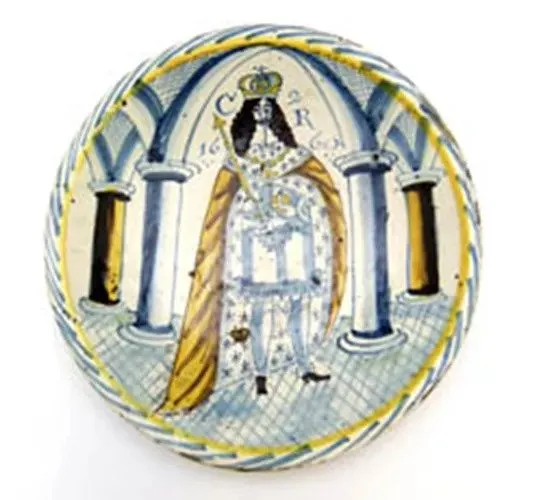
A similar charger for William III’s coronation in 1690 sold for £7,800 at Dreweatts in 2017.
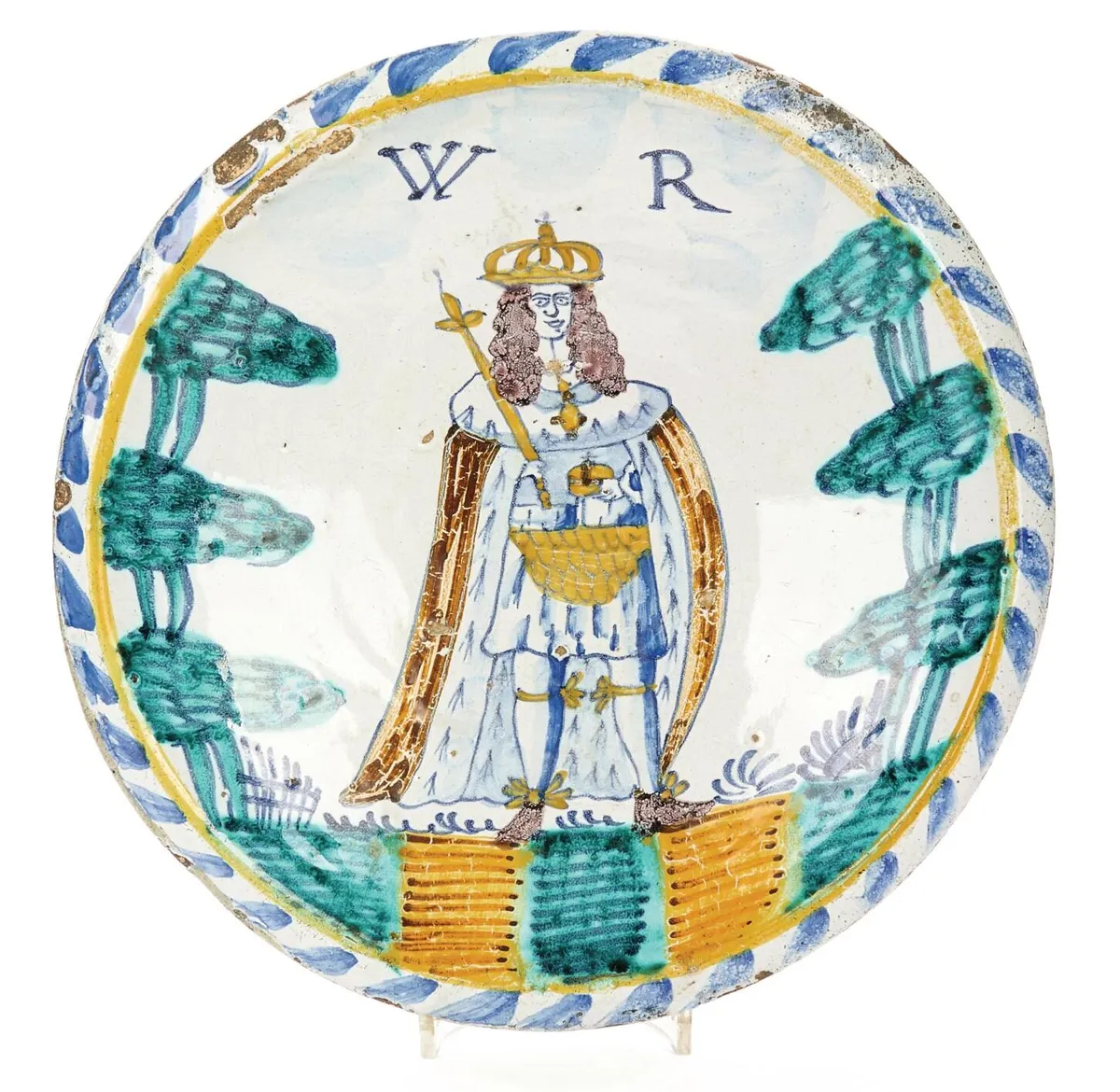
And a delightful Bristol ‘blue-dash’ charger, depicting a naive George II in coronation robes, sold for £7,600 at Duke’s in 2015.
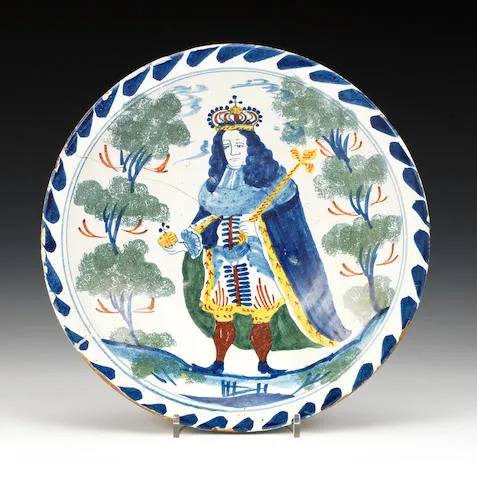
As well as these more traditional pieces of royal memorabilia, there have also been some slightly weirder royal memorabilia sold over the years, including a piece of Queen Victoria's wedding cake and a teabag supposedly used by Queen Elizabeth II.
More affordable royal memorabilia to collect
More affordable are the mugs commemorating the coronation of Queen Victoria in 1838. Read & Clementson produced pretty pearlware transfer-printed mugs with a portrait of Victoria on one side, and her mother, The Duchess of Kent, on the other.
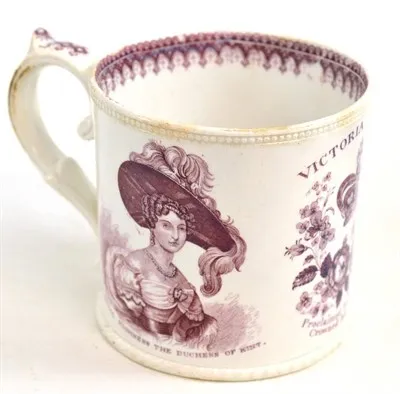
Another collectable piece is the Swansea purple transfer coronation mug, depicting Victoria as a girlish queen, with hair in ringlets and a daringly low-cut dress. A mug in fine condition sold for £620 at Anthemion Auctions in 2007.
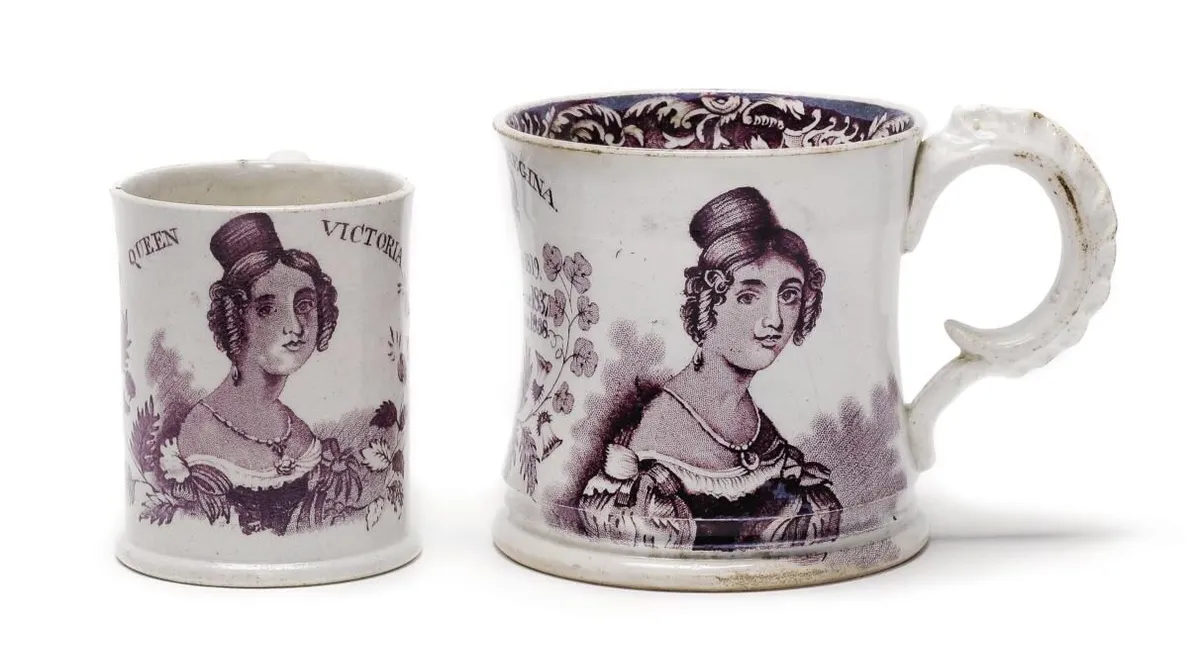
In 1897, W. M. Robinson of Wolverhampton mass-produced an inexpensive enamel beaker for Queen Victoria’s Diamond Jubilee; and similar beakers were made for the coronations of Edward VII in 1902 and George V in 1911.
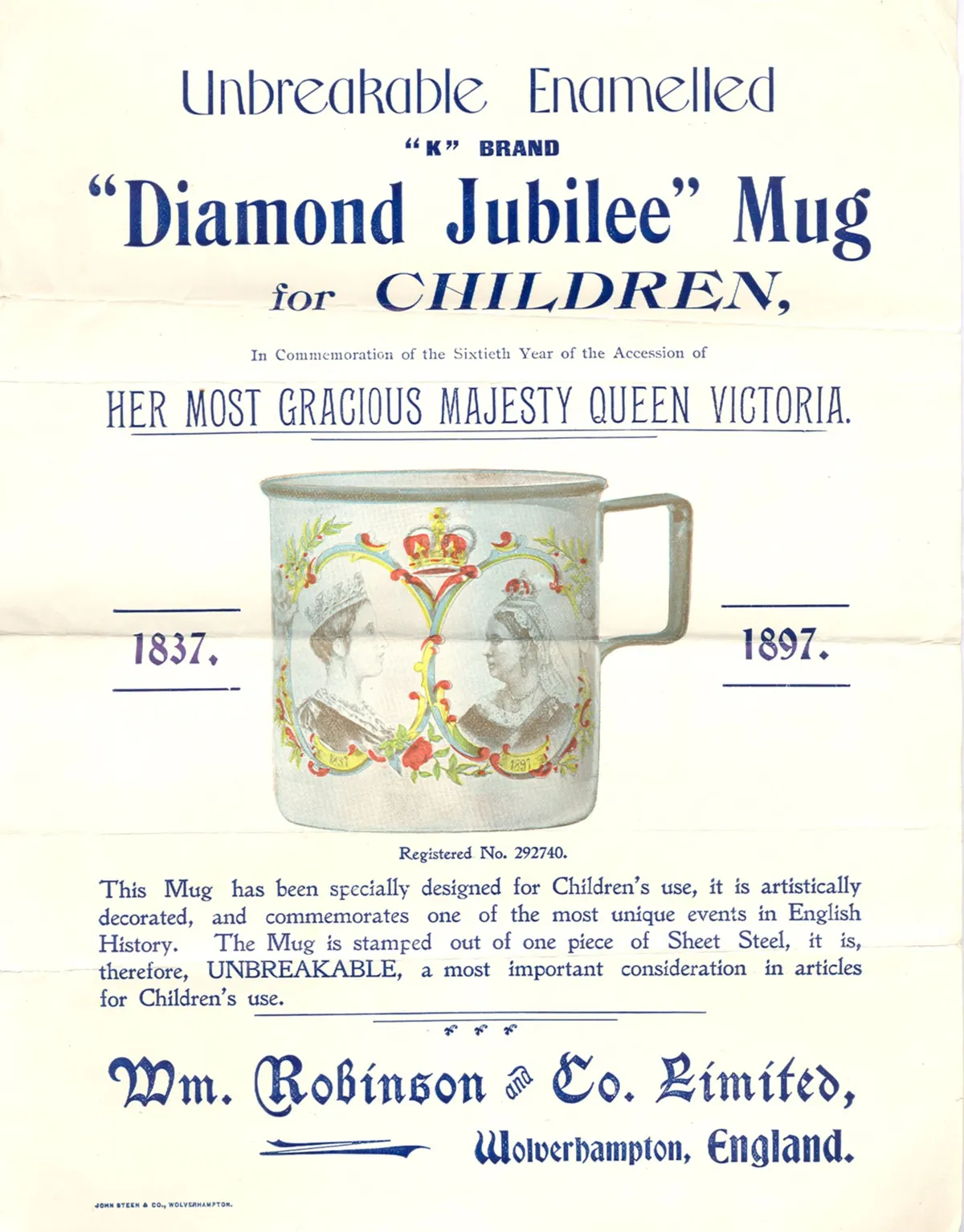
These are comparable to the legendary and highly collectable ‘Cup of Sorrows’, produced by the Bohemian firm of B. G. Gottlieb for the coronation of the ill-fated Russian Tsar Nicholas II in 1896. They appear regularly at auction with an estimate in the region Dreweatts; Bonhams of £150–£200.
Check out our directory of the best antiques fairs and auctions near you.
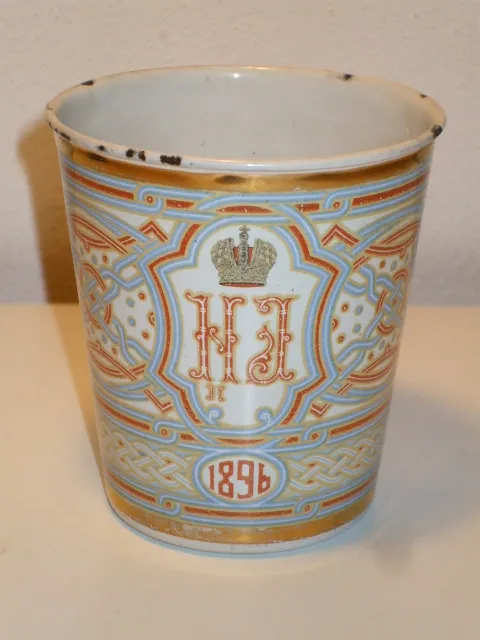
You might also like Platinum Jubilee memorabilia
In the last century, artist Eric Ravilious (1903–1942) created several coronation designs for Wedgwood, which were transfer-printed onto mugs. His ceramics have become increasingly collectable in recent years, and prices have risen. Wedgwood produced a mug for Edward VIII’s coronation in 1937, which, following the abdication, never took place.
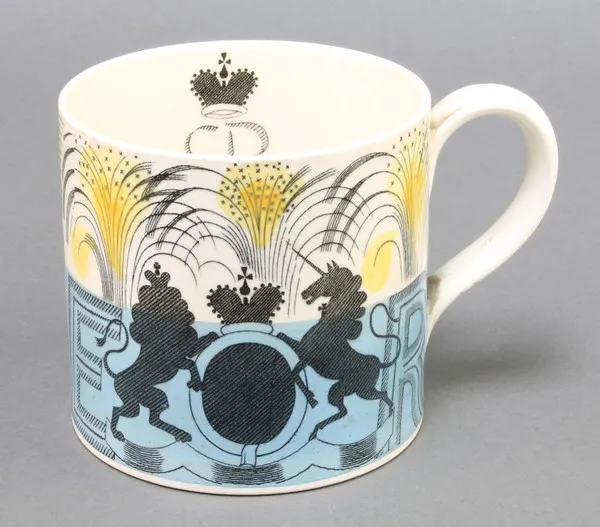
The design shows a Royal Coat of Arms enlivened by a fireworks display, with blue and yellow colouring and Edward’s cypher and crown within. When Edward’s younger brother succeeded the throne as George VI, it was a relatively straightforward process for Wedgwood to transfer the Edward VIII design to the George VI mug, but with the colourways in two versions: blue and yellow (as before) plus eau-de-nil and burnt orange.
Wedgwood used Ravilious’s original design for its 1953 Elizabeth II coronation mug, this time in pink and yellow. These mugs are frequently found and sell for £150–£250 at auction.
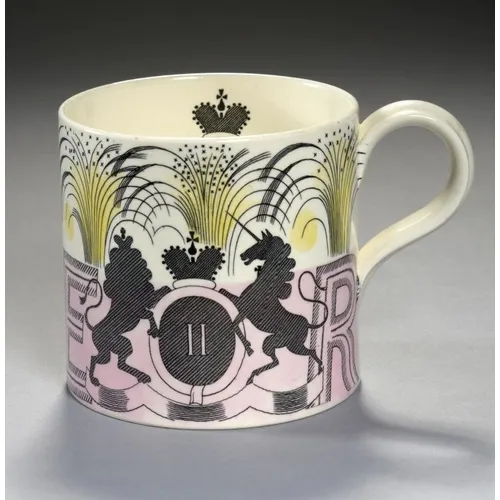
Wedgwood also produced a design by Richard Guyatt (1914–2007) featuring the Lion and the Unicorn, enamelled and lustred in pink and gilt, with the motto ‘God Save The Queen’. These can be bought at auction for less than £100.
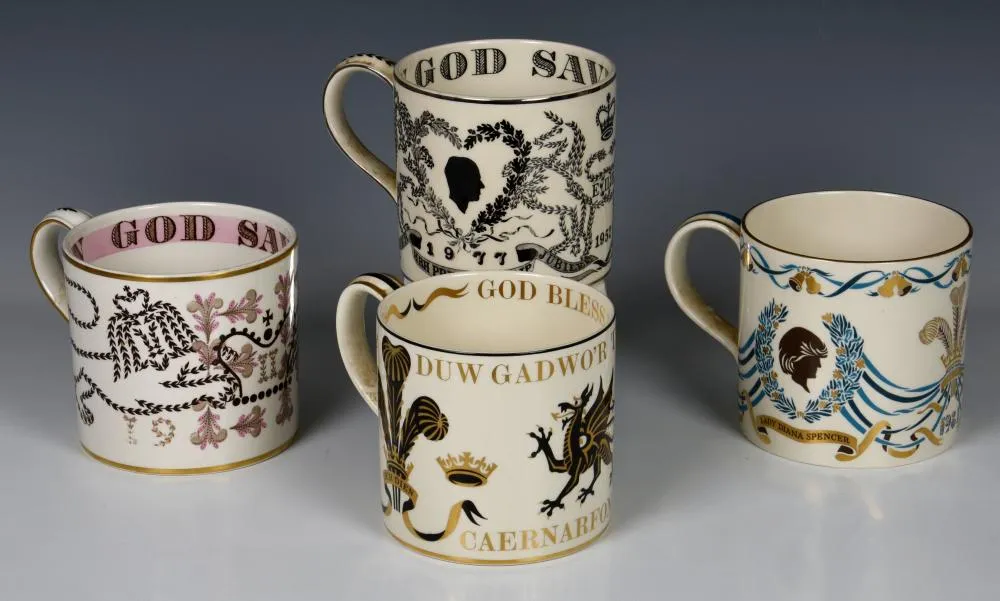
You might also like the strangest Royal memorabilia sold at auction
There's also a charming bone china nursery tea set produced by Foley to celebrate the coronation of George VI. The cups, saucers and side plates are decorated with the coronation procession, Gold State Coach, bunting in bright colours and banners declaring ‘Long Live the King’. Expect to pay £20–£30 at auction, plus buyer’s premium, for a single mug.
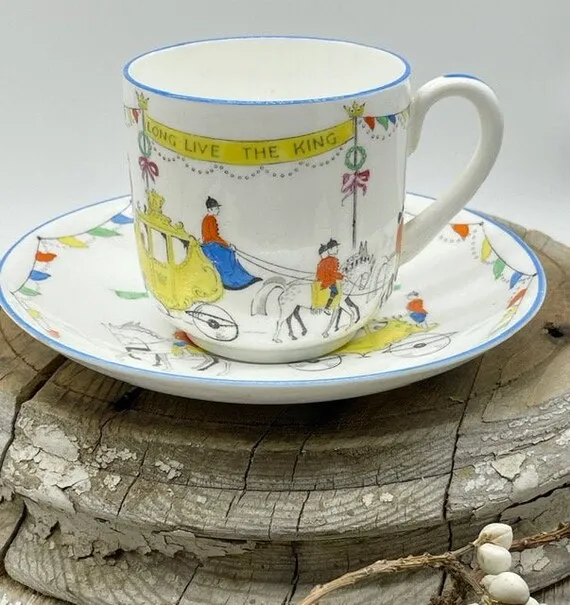
Where to buy royal memorabilia
Royal memorabilia is a broad category of antique, ranging from newspapers and leaflets to high-end jewellery and tableware. The places to buy royal memorabilia are just as varied.
You can pick up a copy of your favourite newspaper on the day of a momentous royal occasion from any corner shop. You can pick up royal momentos and souvenirs from car boot sales, flea markets and antique shops.
But if you want to start collecting more valuable royal antiques, it might be worth keeping an eye on the catalogues of auction houses to find out what's on sale, what's coming up and whether you might be interested.
